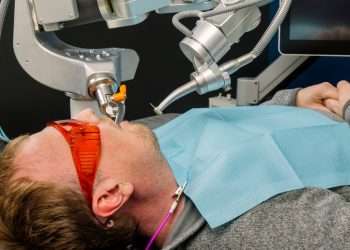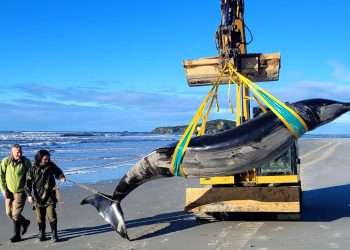IT turns outs humans aren’t the only species to carry out life-saving amputations – ants do too.
Experts observed a group of Florida carpenter ants taking on the gruelling process for wounded nest mates.


Group also spotted cleaning wounds[/caption]
In other cases they were spotted performing a wound clean to prevent the spread of deadly infections.
Wound care among ants is not an entirely new phenomenon but scientists believe it’s the first example of a non-human creature carrying out life-saving amputations.
“The fact that the ants are able to diagnose a wound, see if it’s infected or sterile, and treat it accordingly over long periods of time by other individuals—the only medical system that can rival that would be the human one,” said Erik Frank from the University of Würzburg.
“When we’re talking about amputation behaviour, this is literally the only case in which a sophisticated and systematic amputation of an individual by another member of its species occurs in the animal Kingdom.”
Franks team previously discovered that an African ant species called megaponera analis could treat infected wounds using a substance from their glands.
What makes Florida carpenter ants so remarkable is that they don’t have these glands.
Instead, they appear to be using only mechanical means to treat their nest mates.
They go down one of two routes – either a wound clean using their mouths or they give it a clean after amputating the leg.
The ants even seem to be intelligent enough to assess the type of injury to make informed adjustments on how best to treat it.
And amputations are no quick task for ants either, taking at least 40 minutes to complete.
The study, published in Current Biology, details two types of leg injuries, lacerations on the femur and those on the ankle-like tibia.
When dealing with a femur injury the ants would always give an initial clean of the cut by a nest mate, followed by a nest mate biting off the leg entirely.
With tibia injuries, the ants only gave mouth cleaning.
Either way, both solutions boosted their survival rate.
Survival rates for femur injuries improved from less than 40 per cent to between 90 and 95 percent after an amputation.
And the survival rates for tibia injuries jumped from 15 per cent to 75 per cent after a clean.
“When you look at the videos where you have the ant presenting the injured leg and letting the other one bite off completely voluntarily, and then present the newly made wound so another one can finish cleaning process—this level of innate cooperation to me is quite striking,” Frank added.
Mind-blowing ants

Ants are fascinating critters with some very unique skills and traits.
There are actually more than 12,000 different types of ant in the world.
They are also the longest living insect around.
While some insects only live for a couple of days, Pogonomyrmex Owyheei ant can live up to 30 years.
It’s also well-known that ants are one of the strongest creatures around compared to their size.
A single ant can lift objects up to 50 times its own weight.
Ants don’t have ears – and some don’t have eyes either.
Instead, they rely on vibrations to detect what’s around them.
For the eye-less ants, they use their antennae to communicate with other ants.
They can also send a chemical signal, telling nest mates of possible dangers or to win over a potential lover.
































